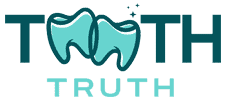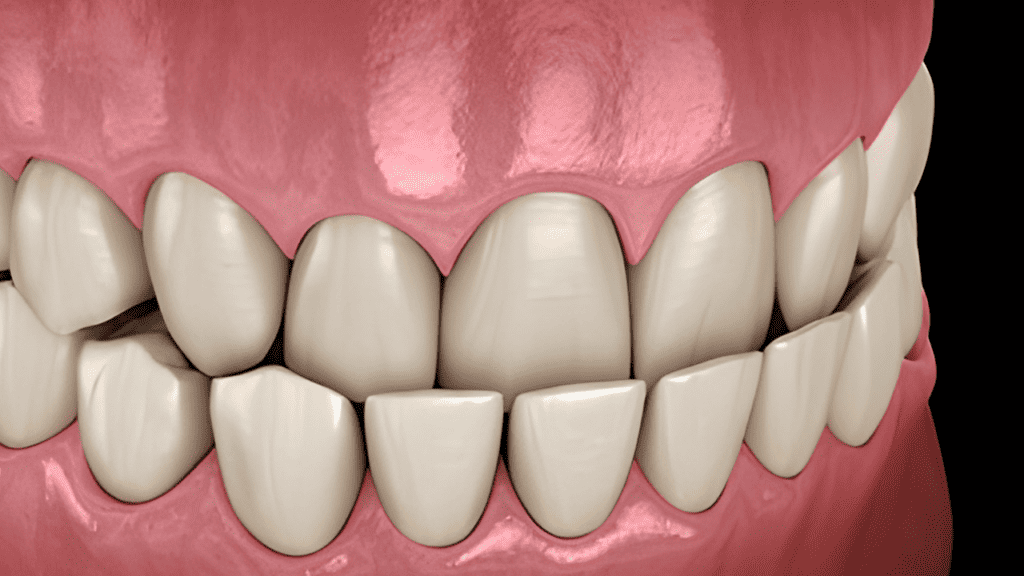Headgear braces are notorious in movies and television. While they may seem over the top, they can play a crucial role in oral health for those that need them. In this comprehensive guide, we will explore the world of headgear braces, their purpose, types, benefits, potential side effects, and everything you need to know. Let’s get started!
What Does Headgear Do for Braces?
Headgear braces, as the name suggests, are orthodontic appliances that work in conjunction with traditional braces to correct various dental issues. They are designed to exert gentle pressure on specific teeth or groups of teeth, ensuring proper alignment and bite correction.
Headgear is often recommended when the orthodontist needs to make significant adjustments to the position of the jaw or address issues such as overbites or underbites.
The primary function of headgear is to guide the growth and alignment of the jawbone, resulting in a harmonious bite and a well-aligned smile. It provides additional support to braces by exerting force on the teeth and jaw in specific directions, encouraging them to move into their proper positions.
Are Headgear Braces Still Used?
While headgear braces may not be as prevalent as they once were, they are still used in certain orthodontic cases. Advances in orthodontic technology and the development of other treatment options, such as clear aligners, have provided patients with more choices. However, headgear remains a viable option for complex cases that require significant jaw movement or bite correction.
Orthodontists carefully evaluate each patient’s unique needs and determine whether headgear braces are the most suitable treatment option. While headgear may not be the go-to solution for every orthodontic case, it can be an effective tool in achieving optimal results for specific individuals.
Different Types of Dental Headgear
There are several types of dental headgear, each designed to address different orthodontic issues. Let’s explore some of the common types:
- Cervical Pull Headgear: This type of headgear is worn at night and applies pressure to the back of the neck and the upper teeth, helping to correct overbites.
- High-Pull Headgear: High-pull headgear is similar to cervical pull headgear but exerts force on the upper jaw and upper teeth, aiding in correcting overbites and encouraging proper jaw growth.
- Reverse-Pull or Facemask Headgear: This headgear is worn during the day and attaches to the upper teeth and forehead, providing forward traction to the upper jaw. It is often used to address underbites by guiding the growth of the upper jaw.
- Combination Headgear: Some cases may require the use of multiple types of headgear simultaneously to achieve the desired results. Combination headgear combines various components to address specific orthodontic needs effectively.
How Long Do You Have to Wear Dental Headgear?
The duration of wearing dental headgear varies depending on the severity of the orthodontic issue and the treatment plan prescribed by the orthodontist.
On average, patients may need to wear headgear for 12 to 24 months. However, it’s important to note that each case is unique, and your orthodontist will provide a tailored treatment plan and a more accurate estimate based on your specific needs.
Consistency is key when it comes to wearing headgear. To achieve the desired results, it is essential to wear the appliance for the recommended duration each day. This typically involves wearing headgear for a specified number of hours, which may include both daytime and nighttime wear. Compliance with wearing headgear is crucial for the success of the treatment, so it’s essential to follow your orthodontist’s instructions diligently.
Benefits of Wearing Headgear Braces
Wearing headgear braces can bring about a range of benefits, ultimately leading to a beautiful and functional smile. Here are some advantages of incorporating headgear into your orthodontic treatment:
- Correcting Jaw Alignment: Headgear braces are particularly effective in addressing jaw alignment issues, such as overbites, underbites, or crossbites. By guiding the growth and movement of the jaw, headgear helps achieve proper alignment, improving the overall bite and enhancing facial aesthetics.
- Enhancing Orthodontic Results: When used in conjunction with traditional braces, headgear can enhance the effectiveness of orthodontic treatment. It provides additional support to braces by exerting targeted pressure on specific teeth, facilitating their movement into their correct positions. This leads to more efficient and accurate results.
- Preventing Future Dental Problems: Correcting orthodontic issues with headgear can prevent potential dental problems in the future. By aligning the teeth and jaws properly, headgear reduces the risk of tooth decay, gum disease, and abnormal tooth wear. It also helps improve the function of the bite, reducing the strain on the jaw joint.
Potential Side Effects of Headgear
While headgear is generally safe and effective when used under the supervision of an orthodontist, there are potential side effects that patients should be aware of. These side effects are usually mild and temporary, but it’s essential to discuss them with your orthodontist. Some possible side effects of headgear include:
- Discomfort and Pressure: Initially, wearing headgear may cause discomfort and pressure on the teeth, jaw, and facial muscles. This is a normal response as the appliance applies gentle force to guide tooth movement. Over time, most patients adjust to the sensation, and any discomfort gradually diminishes.
- Soreness and Irritation: The areas where the headgear attaches to the teeth or face may experience soreness or irritation. Proper oral hygiene practices and following the orthodontist’s instructions for wearing and adjusting the headgear can help minimize these discomforts.
- Speech Impediment: Some individuals may experience temporary changes in their speech patterns when wearing headgear. This is typically a minor adjustment and improves as the patient becomes accustomed to the appliance. Regular practice and speaking exercises can help overcome any speech impediments during the adjustment period.
- Social Concerns: Wearing headgear may understandably cause self-consciousness or concerns about appearance, especially in social settings. However, it’s important to remember that headgear is a temporary part of the orthodontic journey and a stepping stone towards a beautiful smile. Open communication with family, friends, and your orthodontist can provide support and help alleviate any social concerns.
How Much Does Headgear Cost?
The cost of headgear braces can vary depending on factors such as the type of headgear, and the complexity of the orthodontic case.
In general you can expect to pay anywhere from $100 – $10,000 dollars. It’s best to consult with your orthodontist to get an accurate estimate of the total cost.
Headgear braces are typically included in the overall cost of orthodontic treatment, which covers the examination, treatment plan, braces, adjustments, and follow-up visits.
Insurance coverage may also play a role in determining the out-of-pocket expenses for headgear braces. It’s important to check with your insurance provider to understand the extent of coverage for orthodontic treatment, including headgear.
While the cost of headgear braces may seem substantial, it’s essential to consider the long-term benefits and investment in your oral health and overall well-being. Straightening your teeth and correcting jaw alignment issues can have a positive impact on your dental health, confidence, and quality of life.
How to Know If You Need Headgear
Determining whether you need headgear braces is best left to the expertise of an orthodontist. During your orthodontic consultation, the orthodontist will conduct a comprehensive examination, which may include X-rays, photographs, and impressions of your teeth. This evaluation will help assess the alignment of your teeth, the position of your jaw, and any bite irregularities.
Based on the findings, the orthodontist will discuss your treatment options and determine if headgear braces are necessary for your specific case. They will explain the benefits, potential side effects, and the expected duration of treatment. It’s important to ask questions and address any concerns you may have to make an informed decision.
Remember, each orthodontic case is unique, and the need for headgear braces will depend on the specific alignment and bite issues you have. Trusting the expertise of your orthodontist is key in determining the most suitable treatment plan to achieve the smile you desire.
Conclusion
Headgear braces, though not as commonly used today, are still a valuable tool in orthodontic treatment for specific cases. They work in conjunction with traditional braces to guide the growth and movement of the jaw, correct alignment issues, and achieve a beautiful smile.
Different types of dental headgear exist, each designed to address specific orthodontic concerns such as overbites, underbites, or jaw alignment issues. The duration of wearing headgear varies depending on the individual’s needs and the treatment plan prescribed by the orthodontist.
New Mouth
Orthodontic Headgear: Types & When Treatment is Necessary
Healthline
Orthodontic Headgear: Does It Help Improve Teeth?
Nationwide Childrens
Related Articles
Power Chains Braces: The Complete Guide
Lingual Braces: Pros + Cons and How They Work
Erica Anand is a certified dental expert. She holds a BA in Chemistry and a Doctorate of Dental Surgery from Stony Brook University. After completing a two-year pediatric dentistry program, she now runs a private practice focusing on preventive dentistry and is a member of the American Association of Dental Consultants.
Marcus Ramsey has been a professional writer for over seven years. He has talked about and produced content for industries like Dentistry, Healthcare, and more.






